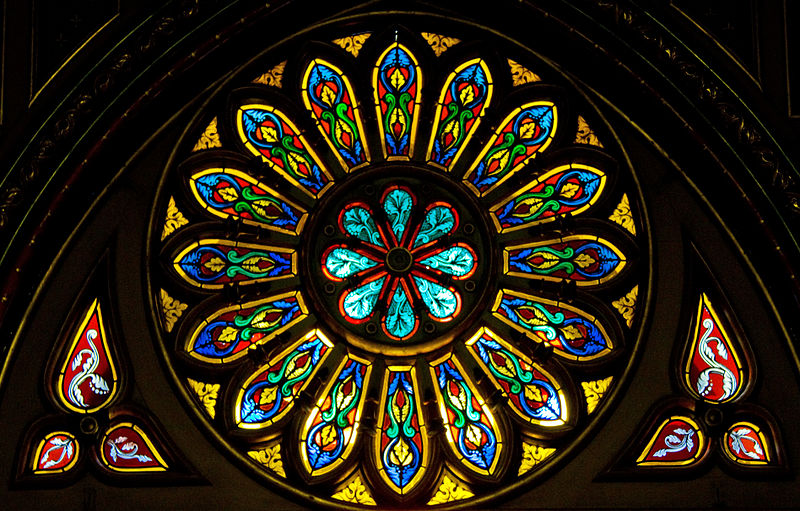Glass is a multi-purpose material, from the delicate applications of Chihuly’s glass sculptural art to the 32-foot glass cube of Apple’s Fifth Avenue Store in New York. By layering standard glass with other materials, adding metallic oxide powder or making slight modifications in the manufacturing process, the final strength and beauty of standard glass can be transformed into glass strong enough to protect from a bullet or beautiful enough to adorn the Notre-Dame Cathedral.
The history of specialty glasses, such as bulletproof glass and stained glass, are all rooted in the invention of glass itself and the application of glazed glass into windows, which was started by the Romans in the first century AD. One of the oldest examples of multiple colors of glass used in one window was found in 686 AD at St. Paul’s Monastery in Jarrow, England.
The Formula Behind Colorizing Glass
Stained glass is made by combining potash and sand over extremely high heat. Even today, the various colors of stained glass are achieved by adding metallic oxide powder. Ruby and blue-toned glass were most popular early on because of their fairly easy formula to produce.
The glass sheets would then be laid over a blue print of the finished window design and cut into the appropriate shapes. In the earliest forms of stained glass, the ribs separating the colors were actually made of plaster, sometimes reinforced with iron for support. As stained glass gained popularity in areas with harsher weather, however, the plaster ribs were replaced with H or U-shaped lead channels called cames.
The Rise and Fall of Stained Glass
Because the church funded most of the arts during the Medieval times and Renaissance, stained glass windows commonly detailed biblical stories for individuals that could not read. During the Renaissance, it became more common to see stained glass integrated into town halls or even wealthy homes, but by 1640, stained glass construction was very rare. There was a short period in the mid-19th century, before the Great Depression, in which artists and even architect Frank Lloyd Wright, sought to recreate the lost art of stained glass, but it was short-lived.
While the prevalence of new stained glass has decreased in modern day architecture, often still reserved for religious applications, the desire to restore and preserve the beauty of what once was seems to be growing. Stories of scrapped stained glass windows finding new life in renovated buildings or made into glass ornaments demonstrates an appreciation of the craftsmanship behind this lost art.
NEXT STEPS:
- Learn more about the history of bulletproof glass
- Visit our blog for other industry news
- Follow us on Twitter, Facebook or LinkedIn
Photo courtesy of www.stockphotosforfree.com


